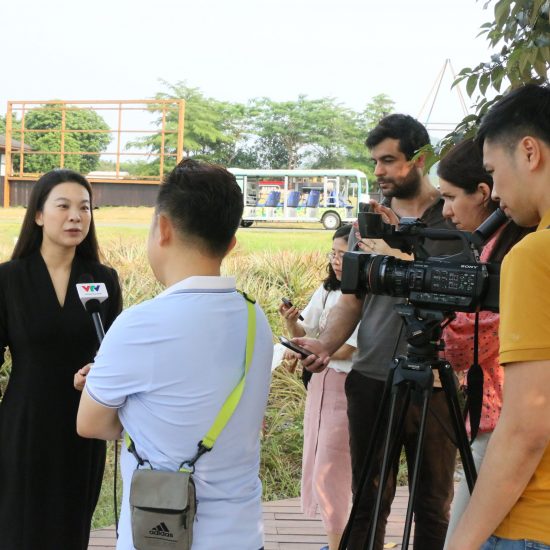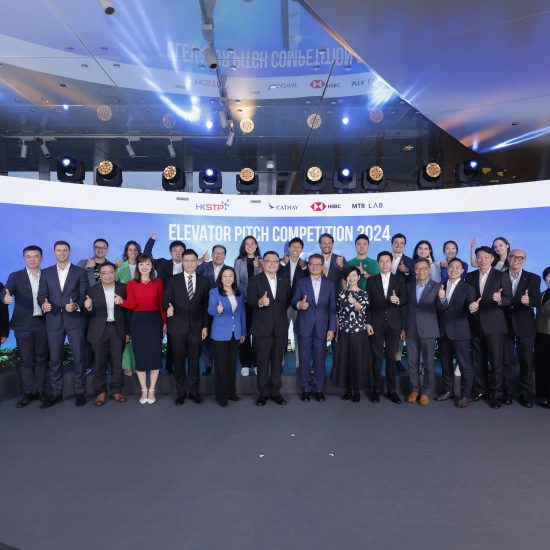Israel’s refusal to lift restrictions on the unfettered entry into Gaza of food, medical supplies, and other desperately needed humanitarian goods, has less to do with a stand-alone starvation policy and more with who controls distribution in the Strip. Both Israel and Hamas see control of aid distribution as a building block of who comes out on top once the guns fall silent.
The struggle for control explains the latest Israeli assault on Al-Shifa hospital in Gaza City and highlights the willingness of Israel and Hamas to sacrifice innocent Palestinian lives in the pursuit of their political goals. The struggle also frames the battle over the future of the United Nations Relief and Works Agency (UNRWA), the foremost humanitarian organisation in Gaza, with the United States seemingly backing Israeli efforts to shut it down and Gulf states walking a tightrope.
Hamas makes no bones about Al-Shifa having served as base for a commander of Gaza’s internal security force, Brigadier General, Faiq al-Mabhouh, in the full knowledge that his presence risked an Israeli assault. Al-Mabhouh was killed during the attack on the hospital. The Israeli military asserted that Al-Mabhouh had been “hiding in a compound at the Al-Shifa hospital from which he operated and advanced terrorist activity,” while Hamas claimed he had been in charge of coordinating aid deliveries to northern Gaza with local clans, UNRWA and other international organisations.
Israel said Al-Mabhouh was among 170 “terrorists” it killed in hospital and its immediate surroundings. Israel said it had captured a further 358 Palestinian fighters. Al Jazeera journalist Ismail al-Ghoul was among the captives. He was later released but said he had been beaten by Israeli forces. Israel has targeted other senior police officials since Al Mabhouh’s killing.
Earlier this week, Israeli forces struck the home of the police’s northern Gaza investigations director, Major Raed al-Banna, killing him, his wife and children. Al-Banna, like Al-Mabhouh, focused on facilitating the entry into Gaza and distribution of aid. In contrast to Hamas military and political officials, who function from the group’s underground tunnels, Al-Mabhouh operated openly in uniform and spoke publicly about maintaining law and order in northern Gaza.
Israel killed Al-Mabhouh and Al-Banna despite a US request that it stop targeting the police force that escorts aid trucks on the Gazan side of the border. US officials warned that a “total breakdown of law and order” was exacerbating the humanitarian crisis in the enclave. In February, US officials said they feared Gaza was becoming another Mogadishu, the Somali capital long wracked by a security vacuum and desperation, in which armed gangs had a free run.
At the heart of the diverging US and Israeli perceptions of the police force are lessons learnt from the 2003 US invasion of Iraq. The United States came to regret its decision to ban Saddam Hussein’s Baath Party and remove all senior Baathists from the government and security forces. As a result, David Satterfield, the Biden administration’s envoy for humanitarian affairs, conceded that the Gazan police “certainly include(s) Hamas elements” but they “also include individuals who don’t have a direct affiliation with Hamas who are there as part of the Palestinian Authority’s remnant presence and security.”
It’s a distinction Israel refuses to make, driven by its determination to create a compliant post-war Palestinian Gazan administration. Israel sees the Strip’s clan and tribe-based gangs as the skeleton of a future subservient Gazan administration that could replace Hamas and create an alternative to Palestine President Mahmoud Abbas’ internationally-backed Palestine Authority.
In February, Israeli Prime Minister Binyamin Netanyahu unveiled a post-war plan, entitled ‘Plan for the day after Hamas,” that envisioned Israeli security control and a Palestinian administration that “will be based on professionals with managerial experience. These local officials must not be identified with states or organizations that support terror and must not receive salaries from them.” Israel’s targeting of the police has forced officers to venture out in plainclothes and unarmed, creating an opportunity for unidentified gunmen, believed to be clansmen, to take control of aid trucks.
The struggle between Israel, Hamas, and the clans burst into the open earlier this month with reports of the death of Haj Saleh Ashur, a leader of the powerful Doghmush clan in northern Gaza suspected of looting aid convoys, and two of his associates. Israeli sources suggested that Hamas killed the three men, noting that the clan had clashed with the Islamist group in the past. The clan said Mr. Ashur died in an Israeli strike last November.
In a statement after the leaking of Ashur’s death, several clans said they would only cooperate with institutions authorized by the Palestine Authority’s backbone, the Palestine Liberation Organisation or PLO, which they described as “the only representative of the Palestinian people.” The clans demanded that “Hamas stops accusing us of treason and apostasy. Our nation can no longer bear the foreign concepts Hamas is trying to disseminate through its toxic media.”
Israel has recently sought to reinforce its preference for the clans by saying it would boycott UNRWA and bar its aid supplies from entering northern Gaza, the hardest hit part of the Strip. In January, Israel, on the warpath against UNRWA long before the Gaza war, charged that 12 of the organisation’s 13,000 Gaza employees had participated in Hamas’ October 7 attack on Israel. Israel has yet to substantiate the claim, according to UN officials and officials of donor countries that initially suspended funding in response to the Israeli allegations.
Many of UNWRA’s donors that suspended funding, including the European Union, Scandinavian nations, EU member states, Canada and Australia, have since restored their support. In contrast to US allies, the US Congress banned funding for UNRWA until March 2025. With an annual contribution of up to US$400 million, the United States is UNRWA’s largest donor.
Gulf states, reluctant to be sucked into Gaza unless there is a credible pathway to a resolution of the Israeli-Palestinian conflict, walk a tightrope. Rather than rushing to UNWRA’s aid, Saudi Arabia, the United Arab Emirates, and Qatar, together with the United States, the chief Israel-Hamas ceasefire mediators, have offered minimal assistance. Earlier this month, Saudi Arabia pledged US$40 million. The UAE disbursed US$20 million it had promised UNWRA last year but hadn’t delivered, while Qatar said it would donate US$25 million for 2024.
At the core of Israel’s campaign against UNRWA is the assertion that the organisation perpetuates the status as refugees of millions of Palestinians, most of whom were born after the 1948 expulsion of Palestinians and many after Israel’s conquest of Gaza and the West Bank in the 1967 Middle East war. In effect, Israel opposes UNRWA because it contributes to Palestinians’ national identity.
A recent report on UNWRA schools in the northern Gazan city of Beit Hanoun by IMPACT-se, a Ramat Gan and London-based textbook watchdog, sought to demonstrate Israeli assertions that UNRWA promotes hatred and violence. The report found that the schools’ books contain anti-Israel incitement, the systematic erasure of Israel’s existence, and the glorification of jihad and martyrdom. The report cited a geography book that features Palestine instead of Israel on maps. Other textbooks glorified explosive belts worn by Palestinian fighters battling the Israeli military, and praised the “image of a burnt Zionist soldier.”
A chemistry book asked students to analyze the type of chemicals contained in phosphorous bombs allegedly dropped by Israel, while an Islamic studies book described the goals of jihad as “terrorizing the enemy” and “achieving martyrdom.”
The IMPACT-se report contrasts starkly with a 2018 State Department-funded report on UNRWA that found, based on a UNRWA review, an anti-Israeli bias in only 3.1 per cent of Palestinian textbooks. The US report noted that UNRWA developed alternate materials that were rejected by Palestinian teachers. An earlier 2022 Impact-se review of Israeli textbooks reported that they taught peace and tolerance, the “Palestinian experience and perspective,” challenges Israeli Palestinians face in integrating into Israeli society, and that they included maps of Palestinian territories.
A 2021 EU-funded analysis of Palestinian textbooks by Germany’s Leibniz Institute for Educational Media or Georg Eckert Institute asserted that Impact-se reports were “marked by generalising and exaggerated conclusions based on methodological shortcomings” that require “further investigation based on an overarching and comprehensive examination of the textbooks, contextualising the specific passages mentioned.”
By the same token, an independent 2016 review of Israeli, ultra-orthodox Jewish, and Palestinian school books by scholars Sami Adwan, Daniel Bar-Tal, and Bruce E. Wexler suggested that the truth was in the middle.
“The results showed…that (1) dehumanizing and demonizing characterizations of the other are rare in both Israeli and Palestinian books; (2) both Israeli and Palestinian books present unilateral national narratives that portray the other as (the) enemy… (and) (3) (that), there is (a) lack of information about the religions, culture, economic and daily activities of the other, or even of the existence of the other on maps,” said Messrs. Adwan, Bar-Tal, and Wexler.
The scholars noted that “the negative bias in (the) portrayal of the other, the positive bias in portrayal of the self, and the absence of images and information about the other” was more prevalent in ultra-Orthodox and Palestinian textbooks than in materials used by the Israeli state.
Also published on Medium.







